#eduard strauss
Explore tagged Tumblr posts
Text

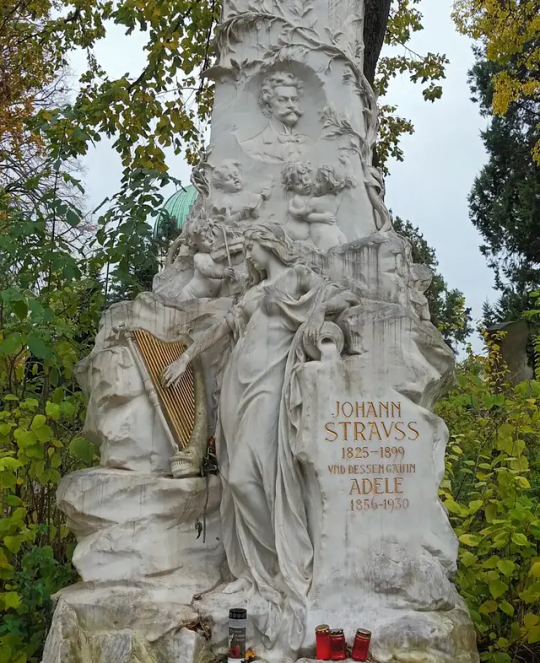
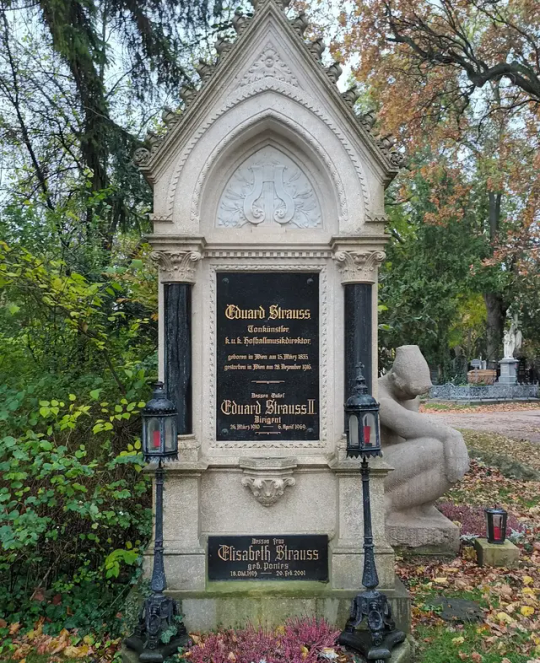
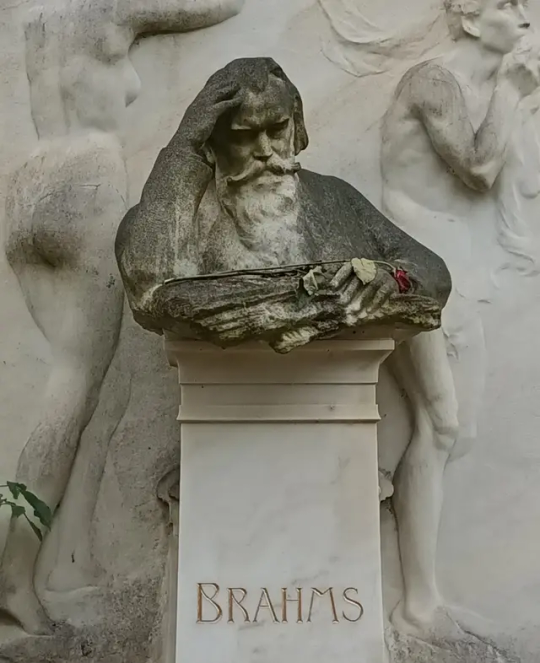

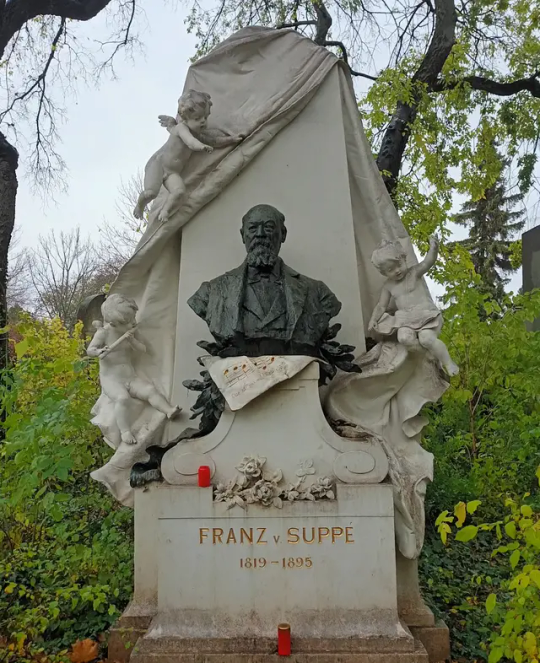

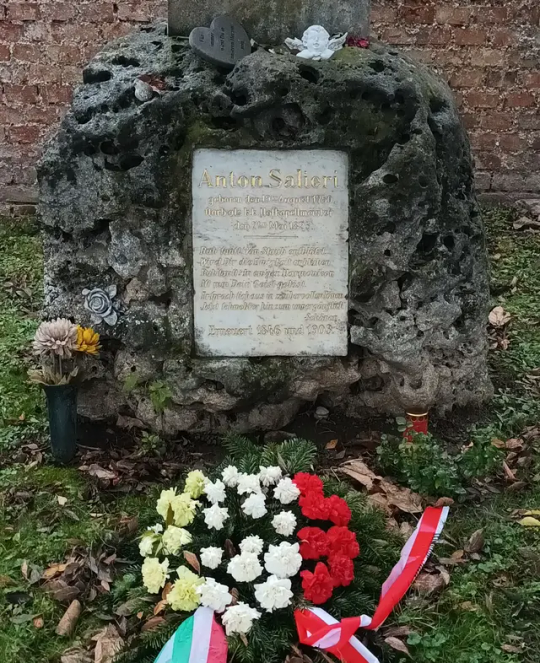

#the gang's all here#vienna#graveyard#cemetery#zentralfriedhof#tombs#classical music#classical composer#beethoven#shubert#brahms#johann strauss#josef strauss#eduard strauss#franz von suppe#antonio salieri#death#gravestone#tombstone#mine#giaffa's pics
10 notes
·
View notes
Text

It's one thing that they're dismantling this autograph collector's "meticulously collated" albums, but the absolutely baffling groupings the deracinated autographs are being auctioned in are themselves worth preserving.
Lot 53: Autographs for Christopher Lee, [director] Ettore Scola, Karl Malden, Lynda Carter, [composer] Johann Maria Eduard Strauss III, and Cy Twombly
#Christopher Lee#Ettore Scola#Karl Malden#Lynda Carter#Johann Maria Eduard Strauss III#Cy Twombly#autographs
1 note
·
View note
Text
Allied Nations War Council Trials
Part XI

Victor Lofton
It's finally time for the one we have all been waiting for- Emperor Victor Lofton


Tsarina Ekaterina: "Let's just jump right into this, shall we? A lot of people have waited a very long time for this moment right here, and I don't want to keep them waiting. Mr. Lofton, how do you plead?" Mr. Lofton: "I do not recognize your authority to demand a plea from me, nor to judge my actions. I am a sovereign, annointed, Emperor, as you are, and therefore neither has the higher rank to judge the other. Only God himself can judge me." Tsarina Ekaterina: "So you choose not to plead?" Mr. Lofton: "Only. God. Can. Judge. Me." Tsarina Ekaterina: "Well you may not recognize our authority, but the rest of the world does, so I am delighted to begin this sentencing."


Tsarina Ekaterina: "For the declaration of war on a trade and commerce ally under false pretenses..."

King Ivan De La Cru: "...for the disruption and blockage of trade routes in the South Seas, preventing necessary food and aid from reaching Allied Nations..."

Queen Aniad Montero: "...for the unlawful occupation of the sovereign nations of Sulani, Tartosa, Selvadorada, and Newcrest..."

Chief Lilah Mahoe: "...for the subjugation of these nations free citizens..."

King Petros Kalogera: "...for the elevation of Crown Princess Martha Lofton-Strauss, Crown Prince Eugene Lofton-Strauss, Prince Jonas Lofton, Lucian Castellano, Earl of Frankvan, and Prince Stefano Colona to positions they had no right to and against your power to do so..."

Queen Genevieve Pelletier: "...for coercing Prince Eugene Lofton-Strauss into an arranged marriage with Lady Mathhilda Schmidt-Bauer, and for coercing Prince Jonas Lofton and Princess Emma Lofton-Strauss into arranged engagements with Lady Johanna Albrecht and Mr. Damien Colona, respectively..."

King Caleb Norton: "...for coercing Lady Adelheid von Hollebein into an arranged marriage with you..."

Emperor Hiroto: "...for breaking the laws of Windenburg and the Windenburg Church, of which you were the head, by committing bigamy and taking Lady Adelheid von Hollebein and Ms. Isabella Bray to wife, despite the fact that you already had one lawful wife, Queen Agathe Lofton..."

King Cesare Colona: "...for forcing your daughter into a dangerous pregnancy, which cost her her life..."

Queen Genevieve Pelletier: "...for the attempted invasion of Brindleton Bay..."

King Ivan De La Cru: "...for the murders of Prince Rauli Montero, Eduard Humphrey, Earl of Sawborne, Wendelin Humphrey, Duke of Whitland, Jean-Paul Yang, Viscount of Grayside, Terry Harden, Earl of Culpepper, Lord Malcolm Landgraab of Oasis Springs, and Crown Princess Martha Lofton-Strauss..."

Tsarina Ekaterina: "...and various other crimes too numerous to mention, this court finds you Guilty, and sentences you to three consecutive life sentences in solitary confinement at Imperial Mountain Prison. You forfeit any and all titles you hold, have held, or might hold by right of inheritance, for you and your heirs. What do you have to say for yourself?"

Mr. Lofton: "I am the greatest Emperor Windenburg has ever and will ever have! My name will live on in the history books, and this feable attempt to crush what I have built, will only be a blip in my story!" Tsarina Ekaterina: "That's nice. There is one more thing, however, before you are dismissed, if you would please take your seat again... Prince Jonas, the court calls you back up to the stand..."

Ho-ly shit... now that was the most satisfying thing we may have ever seen. Victor just had his punishment handed down to him by each and every judge seated at that table- a congregation of the world's most powerful leaders, reducing him to nothing. Many of us have waited a long, long time for that one, and yet somehow, three life sentences still doesn't feel like quite enough.
But now the mystery is... why is Prince Jonas being called to the stand again? What could possibly be happening now?
Stay tuned for more coverage of the trials!
(@wa-royal-tea this one is especialy for you 😉😉😉)
#tw: war#tw:war#allied nations war trials#ts4#ivanov legacy#ts4 simblr#ts4 legacy#behind the scenes#tsarina ekaterina#emperor victor#victor lofton#king ivan#queen anaid#chief lilah#king petros#queen regent genevieve#king caleb#emperor hiroto#king cesare
4 notes
·
View notes
Text
An artist has to pay for the gift of his genius. Wagner paid. He was defeated, one way or another, all his life. His own self-destructiveness always pursued him. There wasn’t one of his triumphs that was not spoiled, at the moment of triumph, by his own self-destructiveness. But what he couldn’t do, his characters do. In his operas, he splits his many-faceted self into those characters. He drains off the evil in himself and, as the long dramas move towards their great catharses, he brings the good together. Hans Sachs does what Wagner wanted to do but never could – renounce his own wilfulness and open up in understanding and compassion to others.
M. Owen Lee, Wagner and the Wonder of Art: An Introduction to Die Meistersinger
Of Wagner’s great operas, “Die Meistersinger von Nürnberg” often gets overlooked when the conversation of “greatest works” begins. Perhaps partly because the story is pretty straightforward and is also admittedly one of the composer’s more intimate operas. The opera opens on Midsummer's eve, Nuremberg in the 16th century - a setting many productions have played loose with for example I went to one of Glyndebourne's production that updated the setting to the early 19th century.
The story revolves around the real-life cobbler-poet Hans Sachs and the guild of mastersingers - poets and musicians who pursue their craft according to traditions and rules. A goldsmith's daughter, Eva, and a knight, Walther von Stolzing, fall in love, but Eva's father has promised her to the winner in the forthcoming song contest. Walther must learn the mastersinger's art rapidly, under the wise tuition of Sachs (considered Wagner's most generous and human character) - and despite a challenge from the foolish town clerk Beckmesser.

The premiere of Richard Wagner’s Die Meistersinger von Nürnberg was generously supported by Ludwig II of Bavaria, at the Munich Court Opera on 21 June 1868. Hans von Bülow conducted, and Franz Strauss, the father of Richard Strauss played the French horn at the premiere. It was enthusiastically received, and Eduard Hanslick wrote in Die Neue Freie Presse, “Dazzling scenes of colour and splendour, ensembles full of life and character unfold before the spectator’s eyes, hardly allowing him the leisure to weigh how much and how little of these effects is of musical origin.”
Within a year of its premiere, Meistersinger was performed across central Europe, and Hans Sachs’s final warning at the end of Act III for the need to preserve German art from foreign threats became a rallying point for German nationalism, particularly during the Franco-Prussian War, the Wilhelmine Reich, the Weimar Republic, and most notoriously, during the Third Reich. But - and quite rightly so - many contemporary productions have attempted to redeem it as one of Wagner's most approachable, tuneful and likeable works.
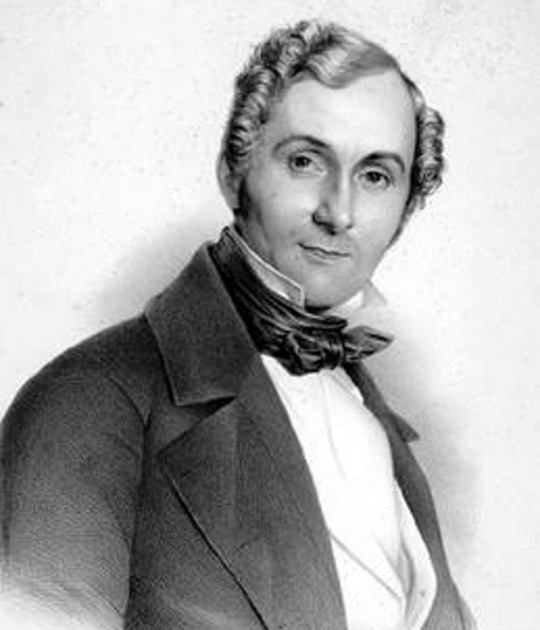
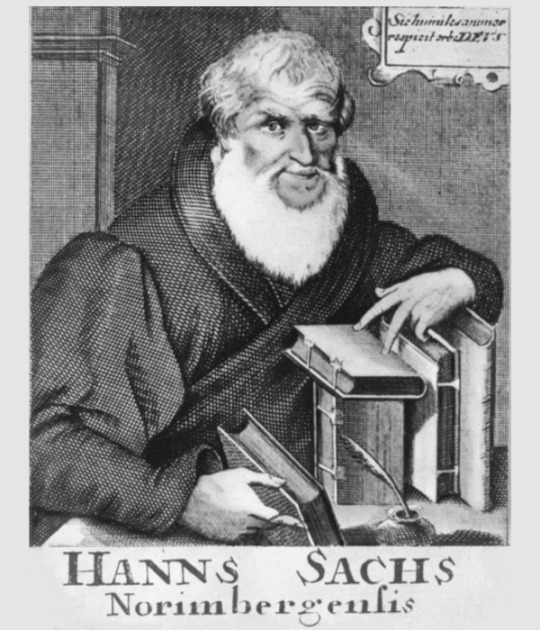
The opera itself was not based on any major myth the way some of his other works were and its tame and comic nature make it seem ripe to overlook in the context of his other massive philosophical works. Yet this opera is every bit as good, if not better, than many of Wagner’s best works. It’s overture has become a staple of the standard orchestral repertoire, but its themes of longing and the nature of art and its purpose are among the most immersive and potent discussions that the creator engages his audience in. The main draw I think is the character of Hans Sachs himself that Wagner himself readily identified with.
As a 15-year-old Wagner saw Deinhardstein’s comedy “Hans Sachs” on a Dresden stage, which captivated him instantly. It was about the Nuremberg poet and Meistersinger Sachs, who was known for his poetry in the 16th century. The art of the Mastersingers went back to minstrels who made music according to free rules and who recorded their art rules in fixed tablatures as they gradually settled in the cities. This art was subsequently administered by the guild masters, of whom the shoemaker Sachs was the most famous.
17 years after his experience in the Dresden theatre, Wagner felt the need to create a cheerful counterpart to the tragic “Tannhäuser”. He recollected the comedy and created his first sketches in 1845 during a spa stay in Marienbad. His involvement in the Dresden Revolution and the hectic flight to Switzerland interrupted the work and it was to take another 15 years before he resumed work.
Why it took him so long to write could partly be explained by financial woes which despite taking a heavy advance he failed to turn in a credible draft. It was not until the work on the opera continued when Ludwig II of Bavaria relieved him of his financial needs and he was able to complete the work by 1867. But also he needed time for ideas to marinate as it was only later that Wagner had come across a chronicle by Wagenseil (“von den Meisters Singer holdseligen Kunst”), which gave him a comprehensive insight into the rules and regulations of the Meistersinger.
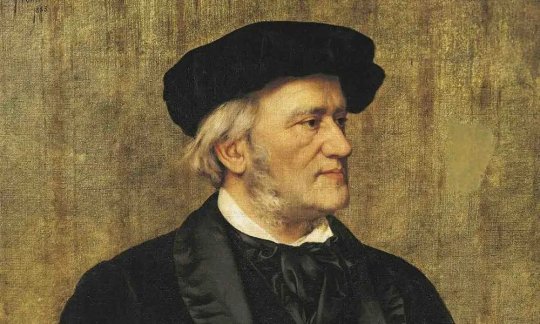
But yet another reason exists which was the emotional turbulence in his life, in particular his relationship with his then secret lover, Mathilde Wesendonck. At the invitation of his Zurich patrons, the Wesendonck couple, Wagner spent a few days with them in Venice in 1861. There he discovered that his secret lover Mathilde Wesendonck was pregnant with her husband’s fifth child. After the love affair was already in a crisis, Wagner realised that this love, which inspired him to “Tristan and Isolde” was over. Now Wagner decided to philosophically transcend this indirect “rejection” and saw himself as Hans Sachs, who renounced love for noble reasons.
The philosophical framework for this was provided by Schopenhauer’s work “Die Welt als Wille und Vorstellung” (The World as Will and representation”), which he had become acquainted with a few years earlier. In Schopenhauer’s pessimistic view of the world, the will of the predator “man” results in destructive torments. This inherent mania leads to war, self-destruction and loss of love, whose only way out is renunciation (of the will).
Thus the shoemaker poet Hans Sachs became a Schopenhauer figure whose world philosophy Wagner expounded in the delusional monologue of the third act. This philosophical change explains the paramount importance of Hans Sachs’ figure in Wagner’s Meistersinger: Sachs is the master himself. Wagner identified himself with no other figure more than the cobbler-poet, and he has him quoted in the third act “Tristan and Isolde”: «Mein Kind, von Tristan und Isolde kenn’ ich ein traurig Stück. Hans Sachs war klug und wollte nichts von Herrn Markes Glück». (“My child, I know a sad tale of Tristan and Isolde. Hans Sachs was clever and did not want anything of King Marke’s lot”). Isolde now became Eva!

Apart from Sachs, all other figures fade away, even the revolutionary hero and iconoclast Walther (who also has a little Wagner in him) must take a back seat to the light figure Sachs. If the Junker Walther were the hero of the final act in a “normal” opera, the third act now becomes the two-hour “Hans Sachs Festival”, which begins with his Wahn-monologue and ends with his «Verachtet mir die Meister nicht» (“Don’t despise me the masters”), forming one of the most gigantic par force tours in all of opera literature. The part of Sachs demands the whole range of the singer’s repertoire: high lyrical passages, long declamatory stretches and of course the high passages of the third act and the enormous final scene.
Marco Jentzsc sings a snippet of Walther's prize song in David McVicar's 2011 production.
#owen lee#lee#quote#richard wagner#wagner#classical music#music#opera#arts#culture#beauty#aesthetics#hans sachs#meistersinger von nurnberg#schopenauer#philosophy#muse#composer#icon
27 notes
·
View notes
Text

Hi! This is a small cozy blog for those who like the atmosphere of the early 20th century. Anton Walbrook, Laurence Olivier, Eduard Strauss, Buster Keaton and many other people who are so little talked about now, but who so want to talk about, will live here. I don't expect popularity. I don't think anyone will look in here. I just want to talk about what I like.
upd: and I don't know English well, but I'm trying to get better.
6 notes
·
View notes
Text

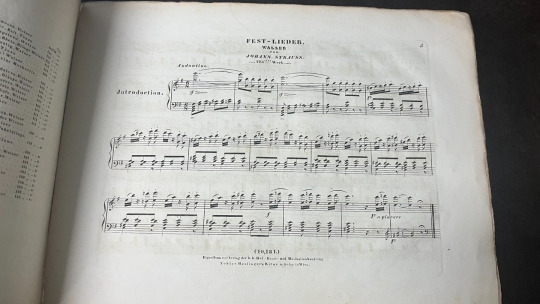

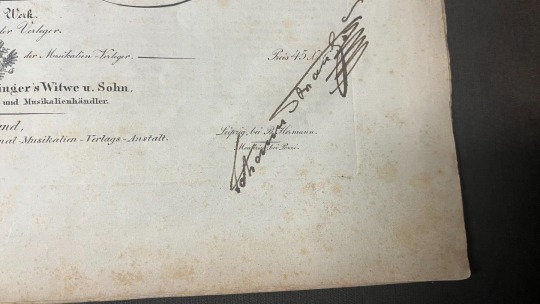
OTD in Music History: Historically important composer Johann Strauss, Sr. (1804 - 1849) -- aka "Johann Strauss The Elder" -- is born in Vienna. Strauss Sr. was famous for the various forms of "light" music (namely waltzes, polkas, and galops) which he helped to popularize in Vienna alongside his friend and colleague, Joseph Lanner (1801 - 1843). He thereby set the foundation for his own sons -- Johann Jr. (1825 - 1899), Josef (1827 - 1870), and Eduard (1835 - 1916) -- to follow in his footsteps and create a multi-generational musical dynasty. Strauss Sr. is perhaps best known today for composing the "Radetzky March" (named after Czech nobleman Joseph Radetzky von Radetz), and he first established his reputation when he began conducting at the “Sperl,” a popular Viennese dance hall, in the early 1830s. By 1834, he was appointed bandmaster to the 1st Vienna Militia Regiment, and the following year he was made Director of the Imperial Court Balls. He then undertook a series of wildly successful concert tours across Europe. Suffice to say, he was a very busy man... but not too busy to acquire a mistress, with whom he had a whopping eight children. Perhaps not surprisingly, this ultimately led him to abandon his first family. Ironically, this proved to be a very fortuitous development for the history of "classical" music: up to that point, Strauss Sr. had staunchly refused to allow any of his sons to pursue careers in music. Johann Jr. was commanded to study banking; Josef was destined for a military career; and Eduard was expected to join the Austrian consulate. But that all changed when Strauss Sr. abandoned the family -- suddenly, the boys were freed up to pursue their musical passions. Johann Jr. quickly struck up his own band, and soon began competing with his father... PICTURED: A rare copy of the first edition printed piano-reduction score for Strauss Sr.'s "Festlieder Waltz" (Op. 193 c. 1845), which he signed on the front cover.
#Johann Strauss I#Johann Strauss#Strauss#composer#classical composer#classical music#music#music history#music theory#Waltz#polka#Galopp#Radetzky March#light music#Romantic Period#Romantic Era#conductor#orchestra#Conducting#symphony
19 notes
·
View notes
Text
Strauss, Johann II - Die Fledermaus Suite for piano solo arr sheet music, Noten
Strauss, Johann II - Die Fledermaus Suite for piano solo arr sheet music, Noten, partitura, partition
https://youtu.be/h22YHoOrzQo


Die Fledermaus, The Flittermouse or The Bat, sometimes called The Revenge of the Bat) is an operetta composed by Johann Strauss II to a German libretto by Karl Haffner and Richard Genée, which premiered in 1874. Die Fledermaus ist eine Operette von Johann Strauss. Sie wurde 1874 in Wien-Wieden uraufgeführt (Wiener Operette) und gilt als Höhepunkt der sogenannten „Goldenen Operettenära“. Die Fledermaus ist eine Operette von Johann Strauss. Sie wurde 1874 in Wien-Wieden uraufgeführt (Wiener Operette) und gilt als Höhepunkt der sogenannten „Goldenen Operettenära“. Musikalische Weiterverwendung Nach Motiven aus dieser Operette entstanden dann eigenständige Werke, die in seinem Werkverzeichnis mit den Opus-Zahlen 362 und 363 sowie 365 bis 368 gekennzeichnet sind. Dabei handelt es sich um folgende Werke: Fledermaus-Polka, Opus 362 (Uraufführung am 10. Februar 1874, Sophiensaal) Fledermaus-Quadrille, Opus 363 (Uraufführung zwischen April und Juni 1874) Tik-Tak-Polka, Polka schnell, Opus 365 (Uraufführung am 6. September 1874, Schwender’s Neue Welt, Hietzing An der Moldau, Polka française, Opus 366 (Uraufführung am 25. Oktober 1874, Großer Saal des Wiener Musikvereins) Du und Du, Walzer, Opus 367 (nach den Maßstäben des heutigen Urheberrechts: Du und Du, Walzer von Eduard Strauss nach Motiven der Operette „Die Fledermaus“, veröffentlicht unter dem Namen seines Bruders als op. 367) (Uraufführung als Fledermaus-Walzer am 2. August 1874 in Schwender’s Neue Welt, Hietzing, mit Titel Du und Du am 6. September 1874, ebenfalls Schwender’s Neue Welt, Hietzing) Glücklich ist, wer vergißt!, Polka Mazurka, Opus 368 (Erste Aufführungen im Sommer 1874) Außerdem entstanden noch die ohne Opus-Zahl versehenen Werke Csárdás aus „Die Fledermaus“, und Neuer Csardas für „Die Fledermaus“. Fortsetzung Nahezu völlig vergessen ist, dass es um 1879 Bemühungen gab, Johann Strauss zu einer Fortsetzung der Operette zu bewegen. Dazu hatte Leon Treptow das Libretto verfasst. Nachdem Strauss endgültig ablehnte (er komponierte anschließend die Operette „Das Spitzentuch der Königin“), wurde „Prinz Orlofsky“ schließlich von Carl Alexander Raida vertont und erlebte am 8. April 1882 im Berliner Viktoria-Theater seine Uraufführung. Bekannt ist daraus bestenfalls noch der „Prinz-Orlofsky-Walzer“. Nach 23 Aufführungen wurde das Werk vom Spielplan genommen und scheint keine weitere Aufführung mehr erlebt zu haben. Read the full article
#SMLPDF#noten#partitura#sheetmusicdownload#sheetmusicscoredownloadpartiturapartitionspartitinoten楽譜망할음악ноты
0 notes
Video
youtube
Eduard Strauss - Electrisch (Polka schnell)
0 notes
Text
The Strauss Dynasty
Starting in the early 19th century, the Strauss family waltzes took Vienna by storm and went on to conquer Europe, even into the era of gramophone records. It began with Johann Strauss I and continued with his sons Johann II, Josef and Eduard and then his grandson Johann III https://on.soundcloud.com/3fRQGimzmAsQhyqXA Josef Strauss (1827-1870)Phoenix MarchVienna Philharmonic OrchestraDaniel…

View On WordPress
#Bahn Frei#Classical Music#composers#die fledermaus#johann strauss#Music#Paul Archibald#Radetsky March#unter den linden#Vienna
0 notes
Text
ウィーン・フィルのニューイヤーコンサート2024で初演奏されたエドゥアルト・シュトラウス作曲 ポルカ・シュネル「ブレーキかけずに」作品238
「 ウィーン・フィルのニューイヤーコンサート2024で初演奏されたエドゥアルト・シュトラウス作曲 ポルカ・シュネル「ブレーキかけずに」作品238」を通販レコードとしてご案内します。 通販CD→ソニー・ミュージックレーベルズ ニューイヤー・コンサート2024-クリスティアン・ティーレマン、ウィーン・フィルハーモニー管弦楽団 AmazonからCDを購入できます。 《ウィーン・フィルのニューイヤーコンサート2024で初演奏された曲》 エドゥアルト・シュトラウス作曲 ポルカ・シュネル《ブレーキかけずに》作品238 Eduard Strauss: Ohne Bremse, Polka schnell,…

View On WordPress
0 notes
Text

EDUARD STRAUSS, 1835-1916
Happy Birthday to Austrian composer Eduard Strauss!
"Master of the Waltz"
Eduard "Edi" Strauss (15 March 1835 – 28 December 1916) was an Austrian composer who, together with brothers Johann Strauss II and Josef Strauss made up the Strauss musical dynasty. He was the son of Johann Strauss I and Maria Anna Streim. The family dominated the Viennese light music world for decades, creating many waltzes and polkas for many Austrian nobility as well as dance-music enthusiasts around Europe. He was affectionately known in his family as 'Edi'.
#classical music#music#birthday#strauss#eduard strauss#waltz#orchestra#famous people#violin#cello#viola#bass#trumpet#clarinet#band#piano#singing#oboe#euphonium#flute#tuba#bassoon#composer
10 notes
·
View notes
Text










The denizens of Beth David Cemetery, Elmont, NY include: Dr. Eduard Bloch, physician to a young Adolf Hitler, TV psychologist Dr. Joyce Brothers, film composer Bernard Herrmann, comedian Andy Kaufman, actor Martin Landau, comedian Jackie Mason, singer/songwriter Doc Pomus, gangster and member of Murder, Inc. Harry "Pittsburgh Phil" Strauss, actor Abe Vigoda and novelist Herman Wouk.
#eduard bloch#dr. joyce brothers#bernard herrmann#andy kaufman#martin landau#jackie mason#doc pomus#harry strauss#abe vigoda#herman wouk#beth david cemetery elmont
42 notes
·
View notes
Text

notitia dignitatum: Listen
1.
In ihrem Buch über die Akten verweist Cornelia Vismann das erste mal auf die notitia dignitatum, als sie über die Schreibstunden in den Traurigen Tropen von Levi-Strauss schreibt und ihre Kritik an Levi Strauss voprbereitet. Der verkenne, dass diese Wellenlinien nicht nur Komödie seien, weil sie zwar durchaus stimmlos sein könnten, aber trotdem nicht sinnlos sein müssten, weil oft auch Sinn macht, was keine Stimme hat und nicht sprechen soll. Vismann verweist auf Theorien nicht phonetischer, nicht-syntaktischer Formation von Notationen und Zeichen. Die notitia dignitatum taucht auf, wo es um eine 'schwache' Schrift geht, weil dieses Schreiben auch noch leicht als etwas anders als Schrift durchgeht, es sind auch Wellen auf Papier.
Der Häuptling, der vage Linien, Wellenlinien, über das Papier ziehe, der fertige Listen an. Sein Schreiben führt nicht zur starken Schrift, es bleibt in dem Sinne auch nicht schriftlich. Es skribbelt. Die Fußnote dazu erklärt nicht, warum diese Wellenlinien Listen seien, diese Klärung ist für Vismann zu wichtig als dass man sie in den Fußnotenapparat abschieben könnte, das macht sie im Haupttext. In dieser Fußnote verweist sie aber auf Jack Goody, The domestication of the savage mind von 1977, dasjenige Buch, in dem der Begriff der großen Trennung auftaucht, der später für Latour oder Viveiros de Castro so wichtig wird.
2.
Die Passage bei Goody, auf die Vismann verweist, die wiederum ist kein Kommentar zu Levi-Strauss, von dem die Geschichte des Häuptlings stammt, aber ein Kommentar zu Saussure, zur Saussure Rezeption und dazu, die Trennung zwischen langue und parole auf der Linie der Unterscheidung zwischen Schriftlichkeit und Mündlichkeit zu ziehen. Die Kritik der großen Trennung ist ein Versuch, dem Umstand Rechnung zu tragen, dass eine Trennung einer Kaskade von Trennungen und Austauschmanövern, also einem Haufen von (anderen) Trennungen aufsitzt und dabei auf Differenz und Wiederholung zu achten. Vielleicht ist eine Trennung, von der man voraussetzt, dass sie in einer großen Anzahl anderer Trennungen kontinuierlich wiederholbar ist, nicht in einer ganz so großen, vielleicht nur in einer kleinen Anzahl anderer Trennungen kontinuierlich wiederholbar?
Wenn man so will ist der Verweis auf Goody an dieser Stelle ein poststrukturalistischer Zug. Vismann dient der Verweis auf Goody an der Stelle als Hinweis auf etwas, was sie erst im nächsten Satz sagt: Nämlich dass Listen sich nicht in das Raster von Schriftlichkeit und Mündlichkeit fügen. Goodys Passage ist Teil eines Kapitels, das den Titel träft: What's in a list? In die Fußnote packt sie aber nicht nur Goody hinein, sondern auch Eduard Böckings Buch über die notitia dignitatum von 1834, weil man dort etwas "zu den ersten Listen in der römischen Antike" finden würde.
Die notitia dignitatum taucht bei Vismann zuerst nämlich als Liste auf. Weiter noch taucht sie aber auch als etwas auf, an dem Trennungen nicht aufgehoben oder verwischt werden, sondern an dem verschlungen werden oder an denen diese Trennung durch Verkehr(ung) effektiv bleiben, also dadurch dass die an durch andere Trennungen einerseits wiederholt andererseits anders, übersetzt und insoweit 'differenziert' werden. Die notitia dignitatum werden in diesem Kapitel von Vismann nicht nur als Listen verstanden, auch die Wellenlinien werden hier als Listen verstanden. Und insoweit werden die notitia dignitatum auch als Wellenlinien, als vage Linien, nicht als unpräzise Linien, sondern als kehrende, verzehrende, verkehrende, wellende, wogende Linien verstanden. Wieso Eduard Böcking? Wieso verweist Vismann auf den? Das weiß ich nicht genau, ich weiß nur, dass es den Böcking in der Bibliothek im MPI gibt, wo Vismann gearbeitet hat, der liegt nämlich gerade vor mir.
1 note
·
View note
Video
<strong>"Hormone" ein Büchlein von 1952 <a href="https://www.flickr.com/photos/altpapier/">by altpapiersammler</a></strong>
#old#vintage#alt#Populärwissenschaft#Buch#book#Titelbild#cover#Bucheinband#Dr. Eduard Strauss#Schriftdesign#Schrift#Lettering#Alwin Fröhlich#Zeichnung#Grafik#art design#drawing#draw#1950s#advertising
1 note
·
View note
Text
Gretl Vernon embodies the classic pre-war Viennese soprano sound
I am unable to locate much information on soprano Gretl Vernon other than she was born in Vienna and spent some time in England in the 1930s where she made a few records and appeared on the BBC several times, as well as performing at the Palladium. Miss Gretl Vernon , the Austrian coloratura soprano , sings in five languages and was known as the Viennese Nightingale .
THE MUSIC: Johann Strauss II was the son of Johann Strauss, and brother to Josef Strauss and Eduard Strauss. All were Viennese composers in the 19th century who specialized in sophisticated waltzes and light music, but Johann II's music was (and remains) the most popular. He was known as "The Waltz King" in his time and most of the Viennese waltzes we hum now were composed by him -- not to mention his enormously successful and genre-defining operettas such as "Die Fledermaus." His waltz "An der schönen, blauen Donau" (On the Beautiful Blue Danube) is one of the most recognizable classical tunes of all time. It premiered in Vienna in 1867 as a choral piece with words by Joseph Weyl, but achieved long-lasting popularity in its orchestral version.
#classical music#opera#music history#bel canto#composer#classical composer#aria#classical studies#maestro#chest voice#Gretl Vernon#soprano#The Viennese Nightingale#The Nightingale#Viennese Nightingale#Johann Strauss II#the Viennese waltz#Viennese waltz#classical musician#classical musicias#classical history#historian of music#muscians#musician#diva#prima donna#An der schönen blauen Donau#Donauwalzer#On the Beautiful Blue Danube#Coloratura Soprano
0 notes